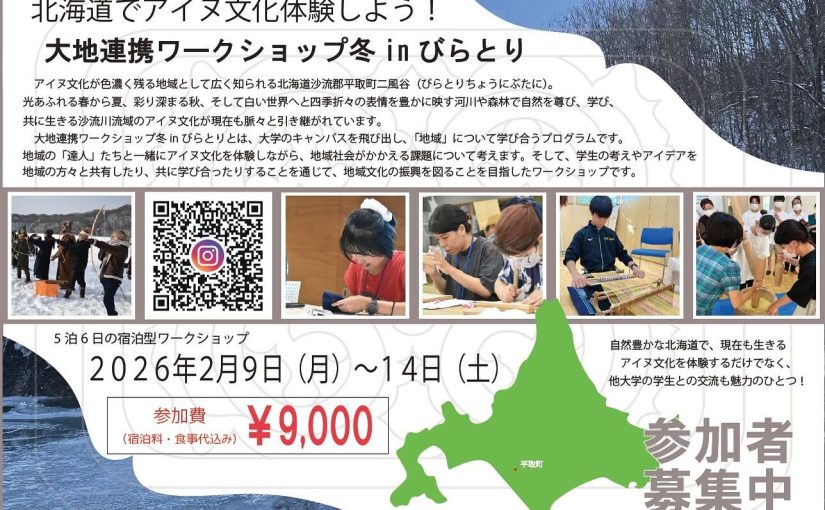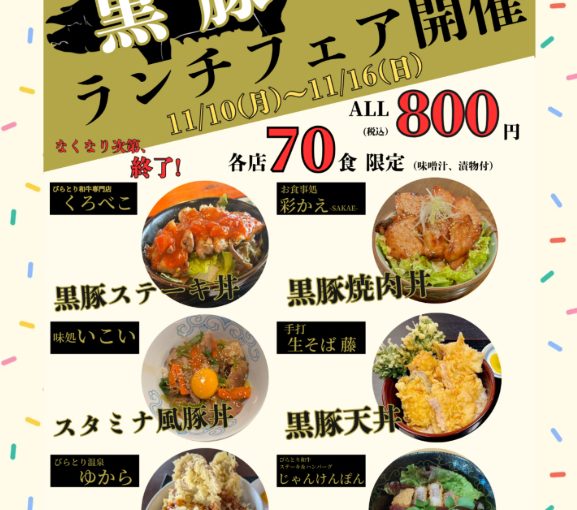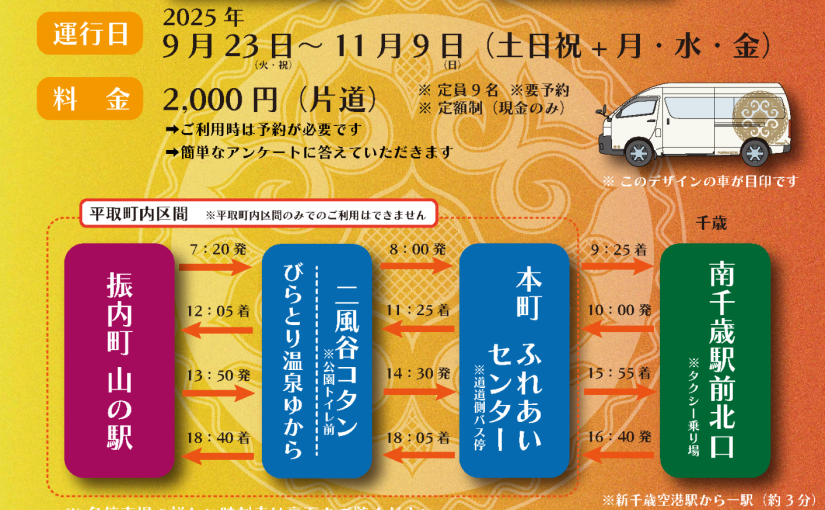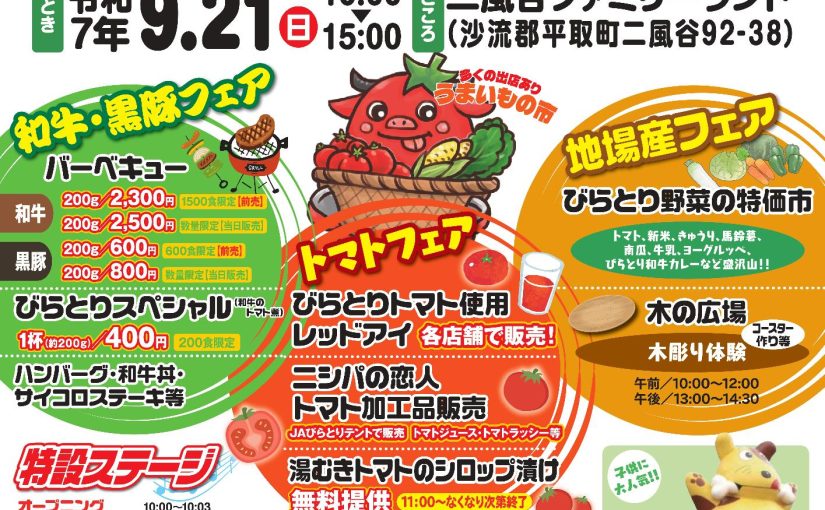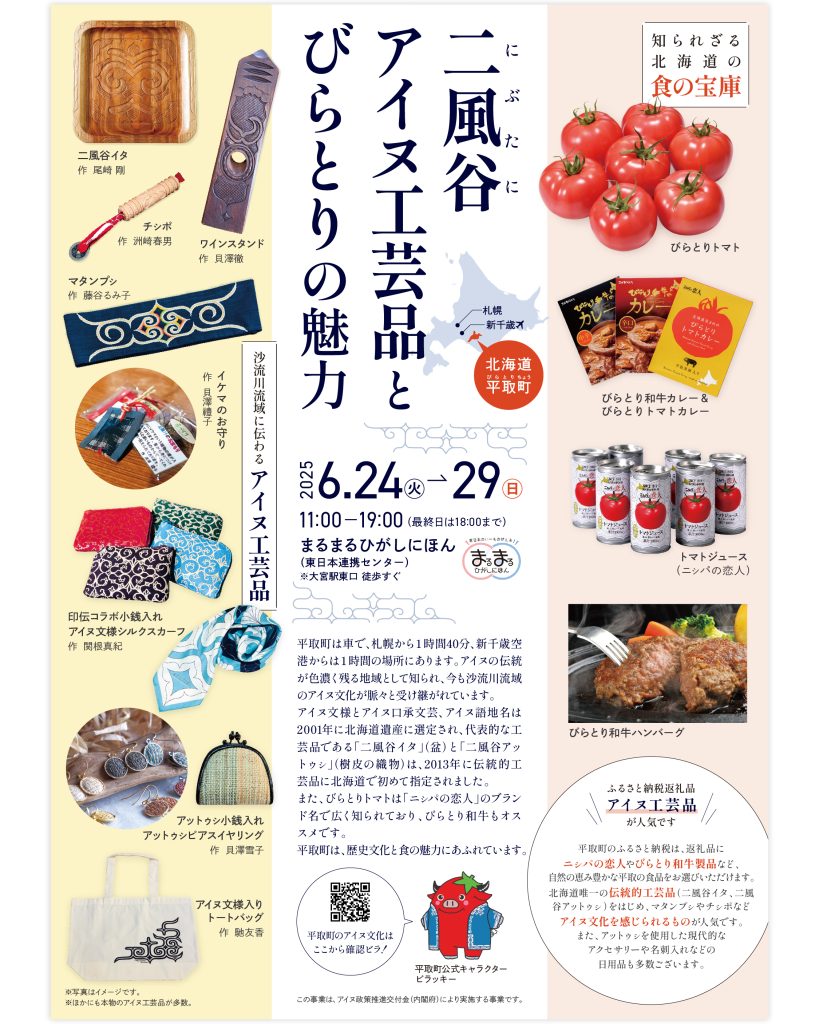
We’re pleased to announce that we’ll be hosting an event in Omiya, Saitama City, to showcase Ainu crafts passed down along the Saru River in Biratori and to share the unique appeal of the town. We look forward to welcoming you!
Ainu Crafts from Nibutani and the Charms of Biratori
Date: June 24 (Tue) – June 29 (Sun), 2025
Time: 11:00 AM – 7:00 PM (*until 6:00 PM on the final day)
Venue: Marumaru Higashi-Nihon (East Japan Collaboration Center)
https://marumaru-higashinihon.jp/
1F, 1-6-1 Daimon-cho, Omiya-ku, Saitama City, Saitama Prefecture
Just a short walk from the East Exit of Omiya Station
Ainu Crafts on Display (Examples):
Nibutani Ita (by Ozaki Tsuyoshi)
Wine Stand (by Kaizawa Toru)
Cispo (by Suzaki Haruo)
Matanpus (by Fujiya Rumiko)
Ikema Amulet (by Kaizawa Reiko)
Inden Collaboration Coin Purse / Silk Scarf with Ainu Patterns (by Sekine Maki)
Attus Coin Purse (by Kaizawa Yukiko)
Tote Bag with Ainu Patterns (by Hase Yuka)
…and many more.
The area around Nibutani in Biratori is home to many artisans who practice traditional Ainu crafts as part of their daily lives. This event offers a chance to see and appreciate their authentic works up close—we hope you’ll come experience them for yourself.
About Biratori Town
Located approximately 1 hour and 40 minutes by car from Sapporo, and just 1 hour from New Chitose Airport, Biratori is known as a region where Ainu traditions are deeply rooted. The Ainu culture of the Saru River region has been handed down through generations. Ainu patterns, oral literature, and Ainu place names have been designated as Hokkaido Heritage. In addition, Nibutani Ita (flat wooden trays) and Nibutani Attus (woven textiles made from the inner bark of trees such as ohyo elm) were the first crafts in Hokkaidō to be officially designated as Traditional Crafts in 2013. Biratori is also known for its delicious “Nispa no Koibito” brand tomatoes and highly recommended Biratori Wagyu beef. The town offers a rich blend of cultural heritage and culinary delights.
*The Ainu people are an indigenous people who have lived around the northern part of the Japanese Archipelago, especially in Hokkaido, with a unique language as well as religious and cultural distinctiveness.
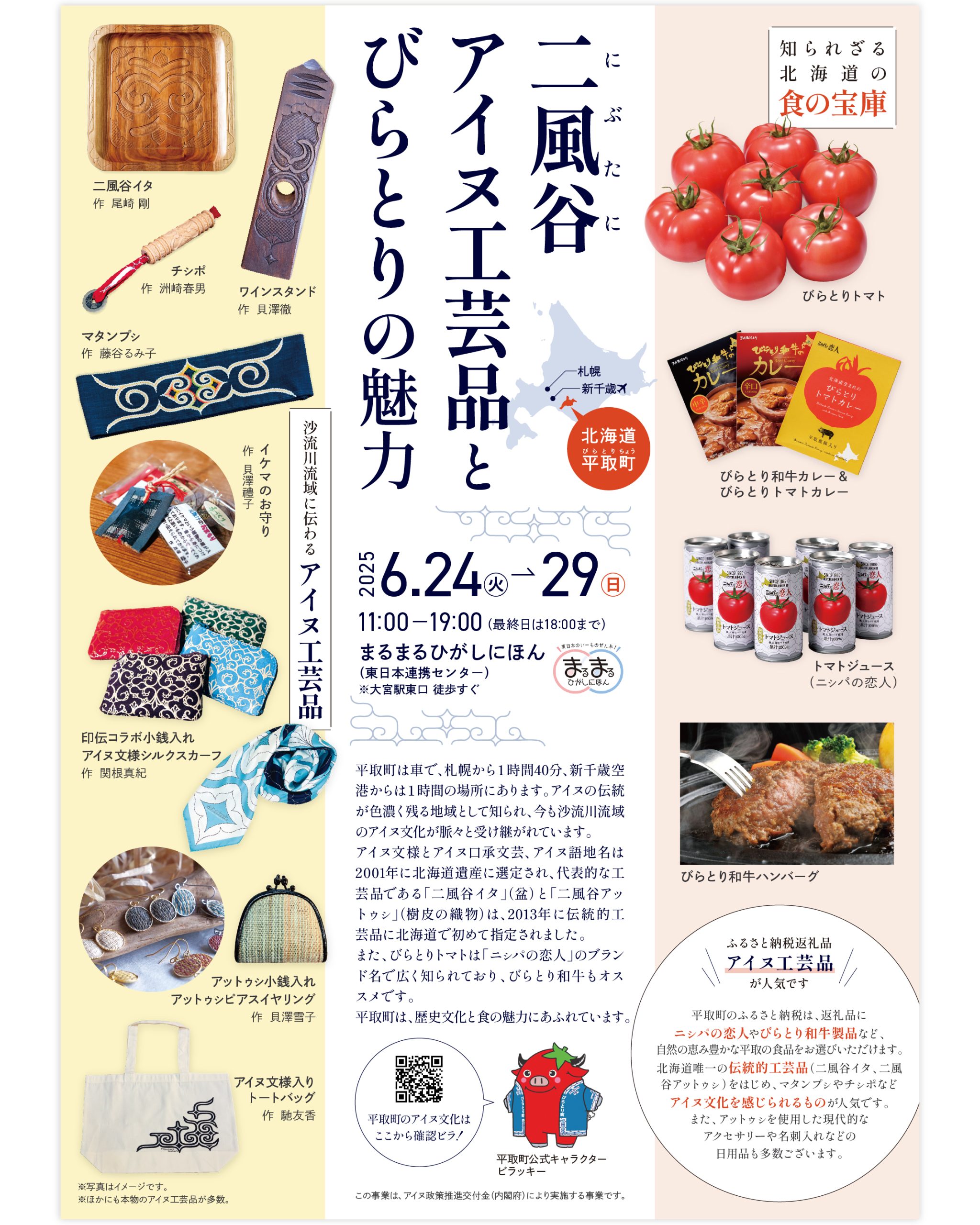
This project is supported by the Cabinet Office’s Subsidy for the Promotion of Ainu Policy Initiatives.

